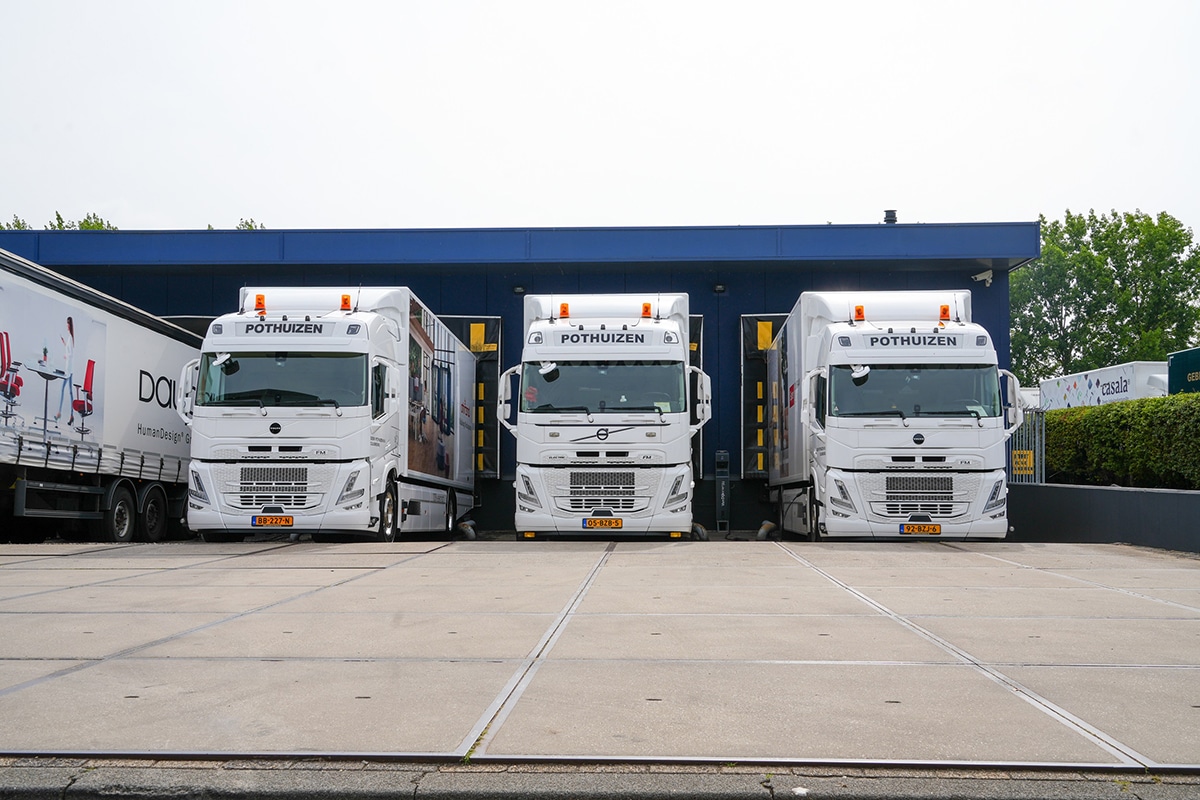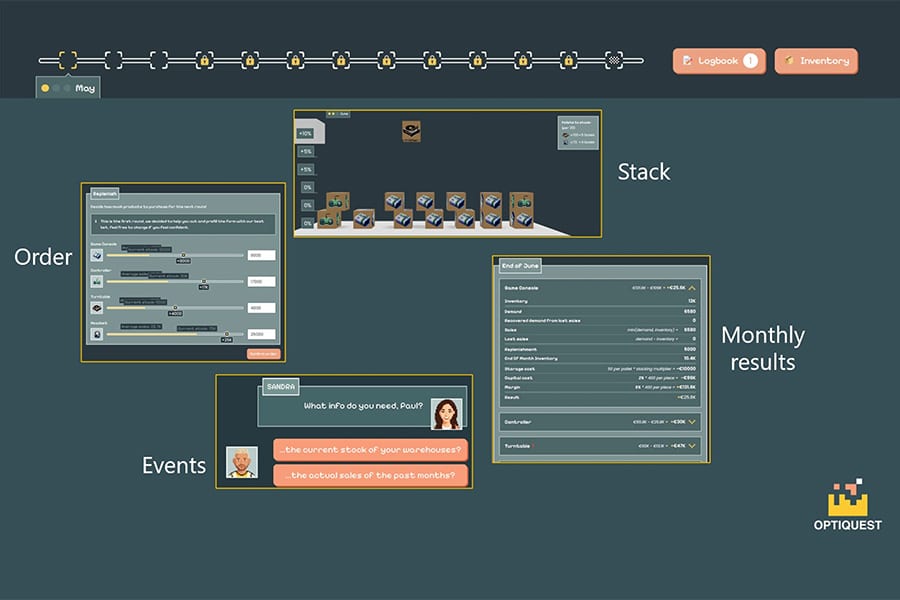
Backup pipeline for sewer at 66 m water depth
Since the early 1970s, multi-pressure sewage pipelines have been installed in several lakes in Austria. This also applies to Lake Fuschlsee in Salzburg, where a PE sewer line on the lake bottom has been in operation since 1975. Since the calculated service life of 50 years will soon be reached, it is necessary to construct a parallel sewer pressure pipeline 4,200 m long. This will serve as a backup pipeline, which can be put into operation immediately if problems arise with the old pipeline. AGRU Kunststofftechnik supplies the components needed for the multi-pressure pipeline, made of the high-tech, stress crack-resistant plastic PE 100-RC.
Multi-pressure pipelines are distinguished by their rapid construction time and by the fact that coastal areas, which are often protected natural areas, remain intact during pipeline installation. In addition, savings can be made on pipe length because the pipelines can be laid in straight lines. Thus, they require lower investment costs than a land-based pipeline. However, since being located in deep water makes the pipeline difficult to access in case of damage, a replacement pipeline must always be available. For this reason, the Fuschlsee-Thalgau Water Treatment Association is investing in a new parallel multi-pressure pipeline made of PE 100-RC. This pipeline will run the full length of the crystal-clear mountain lake - whose water is so pure that it is drinkable - and transport the wastewater of the municipality of Fuschl am See. Between 600 and 900 cubic meters of wastewater per day will be transported, from one side of the lake to the other, where it will be led via a collector to the wastewater treatment plant.
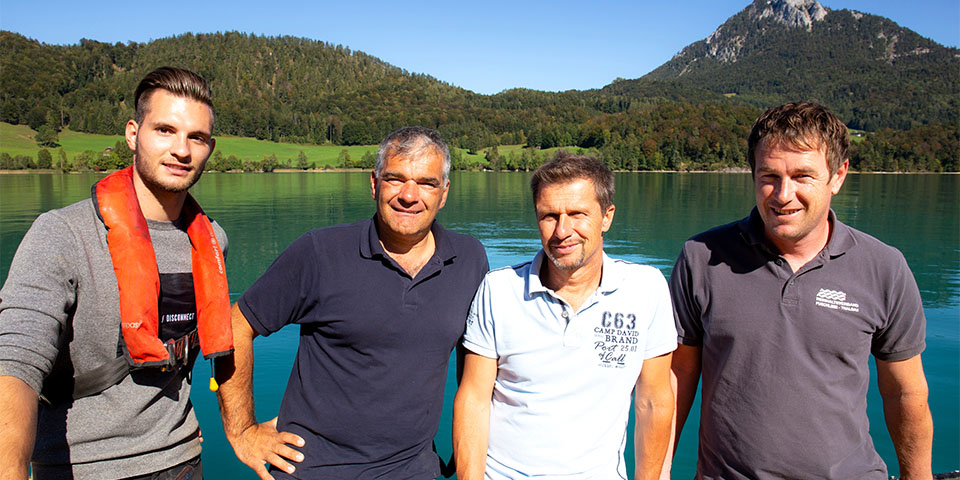
Ing. Erich Peer (2nd from left) and his son Manuel (far left) were responsible for the installation. Ir. Martin Roither (3rd from left) planned the multi-pressure pipeline. Christian Winkler (right) is the director of the water treatment association.
AGRU Kunststofftechnik had previously supplied 4,248 linear meters of OD 280 mm and SDR 17 polyethylene pipes (16 mm wall thickness, maximum pressure of 10 bar), as well as fittings and a CNC-controlled butt-welding machine. The black PE 100-RC pipes with brown, axially running color strips for clear identification of the area of application (wastewater) are distinguished by enormous resistance to point loads and stress cracks. The piping system thus provides additional safety during decades of use on the stony bottom of the lake at a depth of 66 m, where the temperature is only 4°C year-round due to the deviation of the water. In addition, the material also provides very good resistance to the chemicals found in household wastewater (e.g., alkalis and surfactants).
The company PEER WASSERBAU GmbH. & Co. KG. is a recognized specialized company in the fields of hydraulic, structural and civil engineering and is very familiar with the professional installation of multi-pressure pipelines. To complete the more than 4 km long pressure pipeline, engineer Erich Peer and his team, in the short span of about two months, have to weld together 18 meter long pipes, and then lower them into the pipeline route. The AGRULINE pipes are welded with the AGRU ST CNC 2.0 butt welding machine. Thanks to the latest control technology, all parameters such as pressure, temperature and time are always under control. The machine documents the parameters of each individual weld and even the name of the welder. Only an experienced, certified welder is allowed to produce the welded joints. Because the connection of the individual pipe sections is made exclusively with the pipe material, a monolithic, continuously corrosion-resistant pipe system is created.
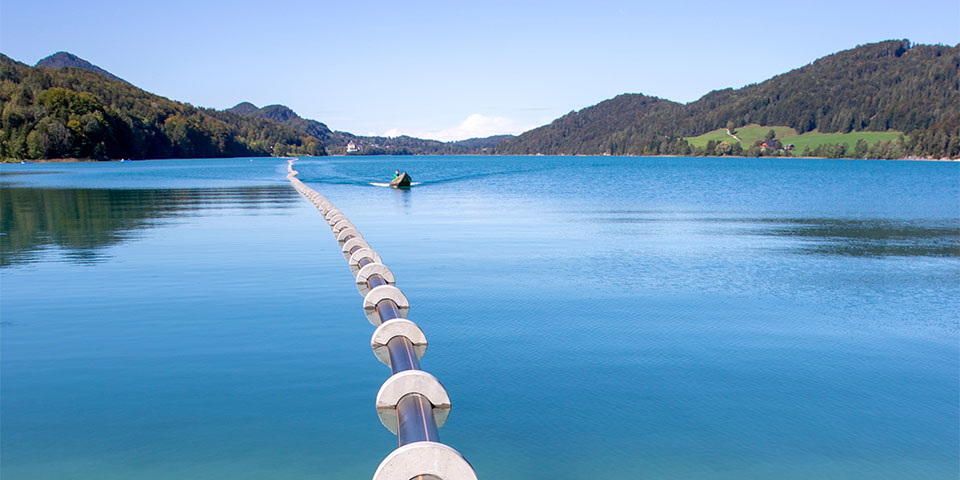
The distance between the weights was calculated so that exactly half of the empty tube was submerged.
Weight also plays an important role in multi-pressure pipelines. Concrete weights must permanently prevent the pipeline system from floating, a problem compounded by possible formation of fermentation gases in the pipeline. In addition, the concrete weights have the task of stabilizing the pipeline sunk on the lake bottom so that it will still be in the same place decades later. PEER uses precast concrete elements consisting of two halves that are placed around plastic pipe-like rings. Then the halves of each ring are permanently connected by stainless steel screws. To protect the pipe and provide additional safety against slippage, a foam insert is sandwiched between the pipe and the concrete. Thanks to these concrete collars, which are attached every 3 meters, about 50% of buoyancy is compensated. If the tube is later filled with water, it will sink to the ground because of the concrete weights.
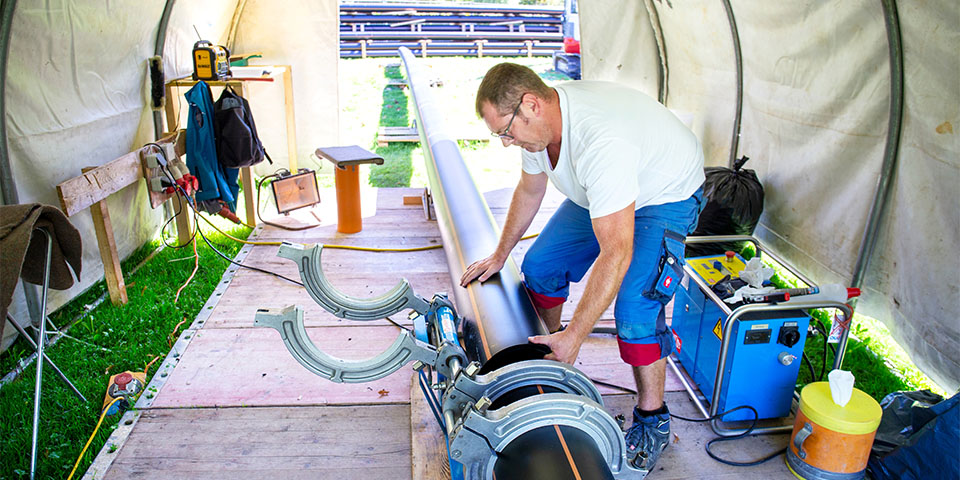
AGRU Kunststofftechnik supplied the pipes, fittings and welding machines for the new multi-pressure pipeline in Lake Fuschlsee.
Every day, about 200 linear meters of ready-to-use pipeline is pushed from the shore into the lake. The miles of floating pipelines could drift due to wind. PEER therefore anchors the pipelines every day and thus tightens them. After about two months of work under all kinds of weather conditions, it is time to lower the 4.2-kilometer-long pressure pipeline to the bottom of the lake. Before this process can begin, there are some general conditions that must be taken into account. Detailed mapping of the lake bottom in the area of the pipeline route is important, as is exact positioning using GPS coordinates. Then the actual process of sinking can begin. To do this, the pressure pipeline is carefully filled with lake water at one end and compressed air at the other. The speed at which the pipeline sinks is crucial, as a certain angle of curvature of the pipeline must not be exceeded. After all, the future sewer traverses the entire length of the lake, and thus the deepest point of 66 m. The entire sinking process therefore takes several hours. After the pipeline has been successfully sunk, a pressure test of the entire pressure pipeline is performed.
The office of Steinbacher + Steinbacher ZT GMBH in Thalgau has many years of experience in urban hydraulic engineering and has already successfully implemented several projects together with the Fuschlsee-Thalgau Water Treatment Association. For this reason, ir. Martin Roither of the Steinbacher office was commissioned to plan the overall concept. This included a variants study, the planning, tendering, and local construction supervision of the upstream retention basin, pump station, and lake pipeline II through Lake Fuschlsee.
Christian Winkler is managing director of the Reinhalteverband Fuschlsee-Thalgau: "The water of Lake Fuschlsee has the quality of drinking water and it should stay that way. The new multi-pressure line serves as a reserve and offers us additional safety, as it can be put into operation within minutes in an emergency. In cooperation with Mr. Martin Roither (planning and construction supervision), we therefore also decided on a plastic pipeline made of AGRU's PE 100-RC, because studies have shown that a PE pipeline of this quality can last up to 80 years. We are satisfied both with the planning and delivery and the quality of AGRU's pipeline. I would also like to thank PEER for the professional and careful installation."

